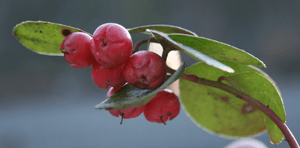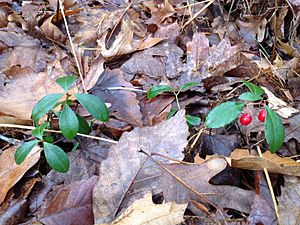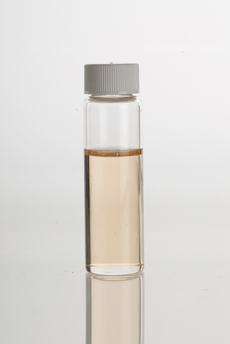Wintergreen facts for kids
Wintergreen refers to a group of plants that have a special, strong smell. The name "wintergreen" used to describe plants that stay green all through the winter, even when it's cold. Today, we usually call these plants "evergreen".
Many plants in the Gaultheria family are called wintergreens, especially in North America. The most common one is the American wintergreen (Gaultheria procumbens). These plants have a special natural chemical called methyl salicylate. This chemical gives them a minty flavor and smell.
Contents
What Wintergreen Is Used For
The berries from the American wintergreen plant (Gaultheria procumbens) have been used for a long time as medicine. Long ago, Native Americans made a tea from the leaves. They drank this tea to help with headaches, fevers, sore throats, and other aches. This worked because the plant contains a substance similar to what is found in aspirin.
During the American Revolution, people even used wintergreen leaves as a substitute for regular tea, which was hard to find.
Flavoring and Everyday Products
Wintergreen is a very popular flavor in many products in America. You can find it in chewing gum, mints, and candies. It's also used in products for keeping your teeth clean, like mouthwash and toothpaste. If you've ever tried root beer, you might have tasted wintergreen in it!
Other Cool Uses
Wintergreen oil has some interesting uses beyond food and medicine.
- Art Projects: Artists can use wintergreen oil to transfer a color photocopy or laser print onto special art paper. It helps the image move from one paper to another.
- Cleaning Firearms: Some special oils used to clean and protect firearms contain wintergreen oil. These oils are good because they are not harmful and break down naturally, unlike some other cleaning products.
- Microscopy: Scientists use artificial wintergreen oil (pure methyl salicylate) when looking at tiny things under a microscope. It helps them see things more clearly because of how it bends light.
Wintergreen Oil
Many Gaultheria plants produce a special substance called oil of wintergreen. This oil is usually pale yellow or pink. It has a very strong, sweet, woody smell. If you crush the leaves, you can often smell this "medicinal" scent.
Wintergreen oil is usually made by steaming the leaves of the plant. The leaves are first soaked in warm water. This process helps create the methyl salicylate, which is the main part of the oil.
Some types of birch trees also produce oil of wintergreen, even though they are not called wintergreens. Plants from the Spiraea family also have a lot of methyl salicylate.
Even though wintergreen has a strong "minty" smell and taste, the Gaultheria plants are not true mints. True mints belong to a different plant family called Mentha.
Uses for Wintergreen Oil
Wintergreen oil is used in many ways, often mixed with other things or used for its smell.
- Muscle and Joint Comfort: People sometimes use diluted wintergreen oil on their skin to help with muscle and joint aches. It's a traditional remedy for things like arthritis and tendinitis.
- Fragrances and Flavors: The oil is also used in some perfumes. It's a common flavor in toothpaste, chewing gum, soft drinks, and candies.
- Cleaning Metal: Wintergreen oil can help remove rust and grease from machines. It's especially good at cleaning away corrosion caused by seawater.
- Rubber Repair: It can even help make hardened rubber parts flexible again!




